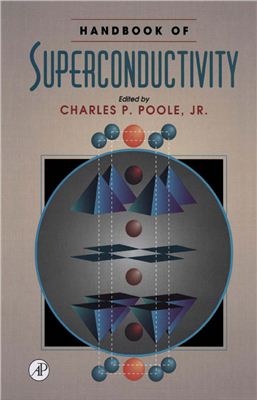Academic Press, 2000, 693 pages
The field of superconductivity has tremendous potential for growth and further development in industrial applications. The subject continues to occupy physicists, chemists, and engineers interested in both the phenomena itself and possible financially viable industrial devices utilizing the physical concepts. For the past five years, within the publications of the American Physical Society, for example, 40%-60% of all articles submitted to major jouals in the area of Solid State Physics have been on the subject of superconductivity, including the newer, extremely important subfield of high temperature superconductivity (high Tc).
This handbook is not just about the copper oxide superconductors, but about all superconductors. The first chapter provides an overview, units and conversion factors, and a lengthy glossary of terms. Chapter 2 summarizes the properties of the normal state, and Chapter 3 does the same for the superconducting state. The fourth chapter presents the results of the main models and theories that are routinely used to explain experimental data. Chapter 5 summarizes the properties of the various types of classical materials as well as those of more recently discovered superconducting systems, and provides an extensive tabulation of their transition temperatures. The crystal structures of these compounds are presented in the sixth chapter. The general features of the atom arrangements in high Tc cuprates are reviewed in Chapter 7, and the details of their individual structures are provided in Chapter
8. The ninth chapter fuishes long tabulations of the various parameters such as Bc and Jc that were mentioned above. The next chapter covers thermal properties such as the specific heat, thermal conductivity, and entropy transport, as well as thermoelectric and thermomagnetic effects. Chapter 11 surveys electrical properties such as the Hall effect, tunneling, Josephson junctions, and superconducting quantum interference devices (SQUIDS). Chapter 12 covers magnetic properties such as susceptibility, magnetization, critical fields, vortices including their anisotropies and their motion, transport current in a magnetic field, and intermediate states. Chapter 13 examines various mechanical properties like elastic, shear, and bulk moduli, Poisson's ratio, flexural and tensile strength, hardness, and fracture toughness. Finally, the last chapter on compositional phase diagrams presents many teary and a few quateary (tetrahedral) phase diagrams for all the basic cuprate systems. Included are several liquidus surface, subsolidus equilibrium, primary crystallization field, and temperature/composition plots.
The field of superconductivity has tremendous potential for growth and further development in industrial applications. The subject continues to occupy physicists, chemists, and engineers interested in both the phenomena itself and possible financially viable industrial devices utilizing the physical concepts. For the past five years, within the publications of the American Physical Society, for example, 40%-60% of all articles submitted to major jouals in the area of Solid State Physics have been on the subject of superconductivity, including the newer, extremely important subfield of high temperature superconductivity (high Tc).
This handbook is not just about the copper oxide superconductors, but about all superconductors. The first chapter provides an overview, units and conversion factors, and a lengthy glossary of terms. Chapter 2 summarizes the properties of the normal state, and Chapter 3 does the same for the superconducting state. The fourth chapter presents the results of the main models and theories that are routinely used to explain experimental data. Chapter 5 summarizes the properties of the various types of classical materials as well as those of more recently discovered superconducting systems, and provides an extensive tabulation of their transition temperatures. The crystal structures of these compounds are presented in the sixth chapter. The general features of the atom arrangements in high Tc cuprates are reviewed in Chapter 7, and the details of their individual structures are provided in Chapter
8. The ninth chapter fuishes long tabulations of the various parameters such as Bc and Jc that were mentioned above. The next chapter covers thermal properties such as the specific heat, thermal conductivity, and entropy transport, as well as thermoelectric and thermomagnetic effects. Chapter 11 surveys electrical properties such as the Hall effect, tunneling, Josephson junctions, and superconducting quantum interference devices (SQUIDS). Chapter 12 covers magnetic properties such as susceptibility, magnetization, critical fields, vortices including their anisotropies and their motion, transport current in a magnetic field, and intermediate states. Chapter 13 examines various mechanical properties like elastic, shear, and bulk moduli, Poisson's ratio, flexural and tensile strength, hardness, and fracture toughness. Finally, the last chapter on compositional phase diagrams presents many teary and a few quateary (tetrahedral) phase diagrams for all the basic cuprate systems. Included are several liquidus surface, subsolidus equilibrium, primary crystallization field, and temperature/composition plots.

